|
Explore the Secrets of the Paranormal in:
THE PHYSICS OF THE PARANORMAL |
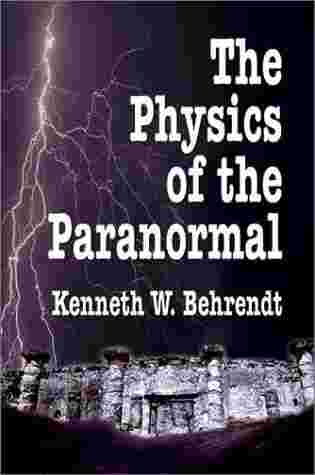
|
|
Find Answers to the UFO Mystery in:
SECRETS OF UFO TECHNOLOGY |
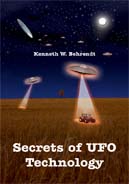
|
|
Find EVEN MORE Answers to the UFO Mystery in:
THE HOW AND WHY OF UFOS |

|
|
Answers for the MOST serious of ufologists:
THE NEW SCIENCE OF THE UFO |
|
|
Know Tomorrow's Science Today:
ESSAYS FROM THE EDGE OF SCIENCE |

|
|
After Three Centuries, THE Solution:
THE TRIUMPHANT ORFFYREAN PERPETUAL MOTION FINALLY EXPLAINED! |
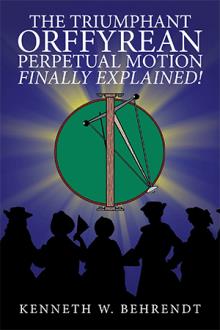
|
|
Humanity's New Physics Begins Here:
THE COMING ALTERNATIVE SCIENCE REVOLUTION |
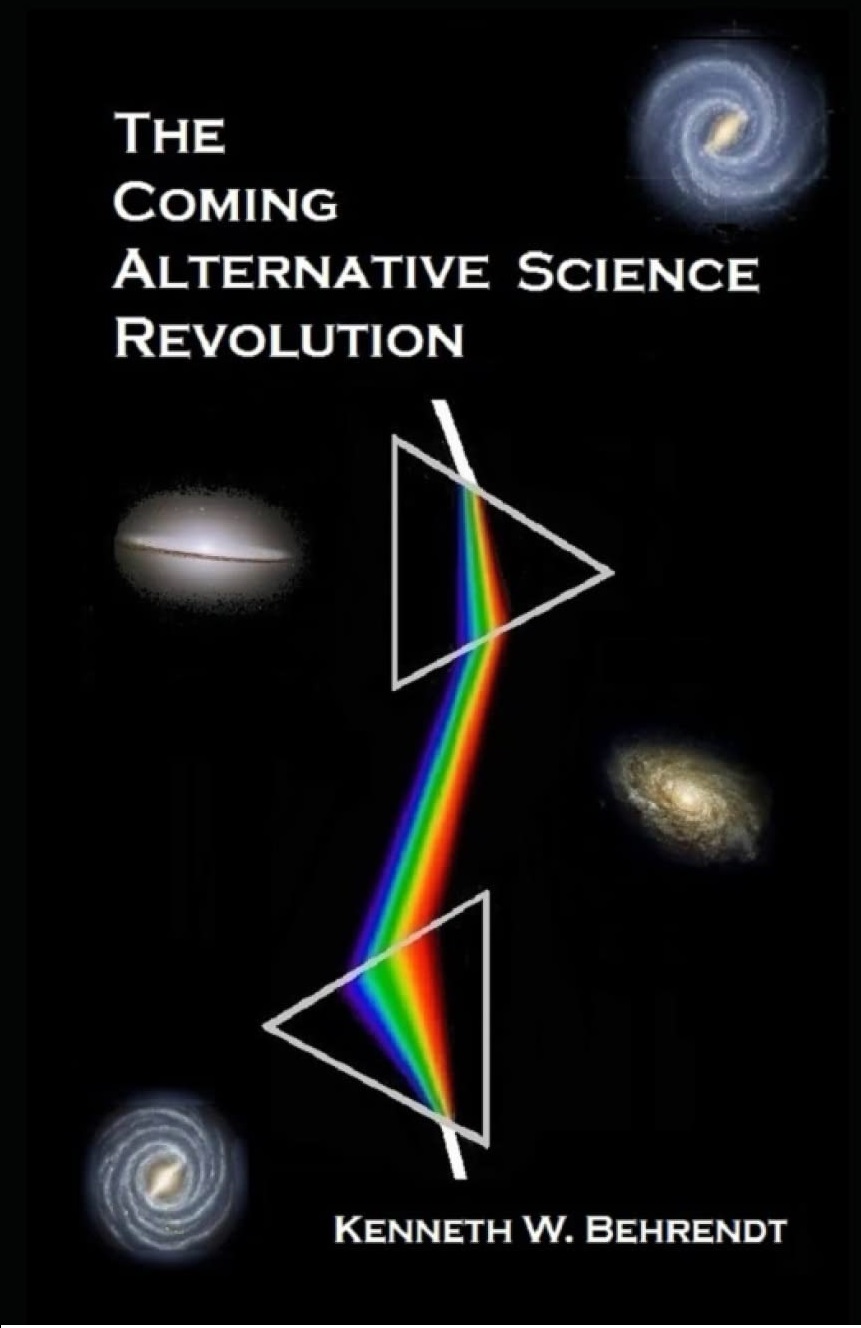
|
|
Finally Answers that Make Sense:
Answers to 101 Questions About Extraterrestrial UFOs That THEY Don't Want YOU to Know! |
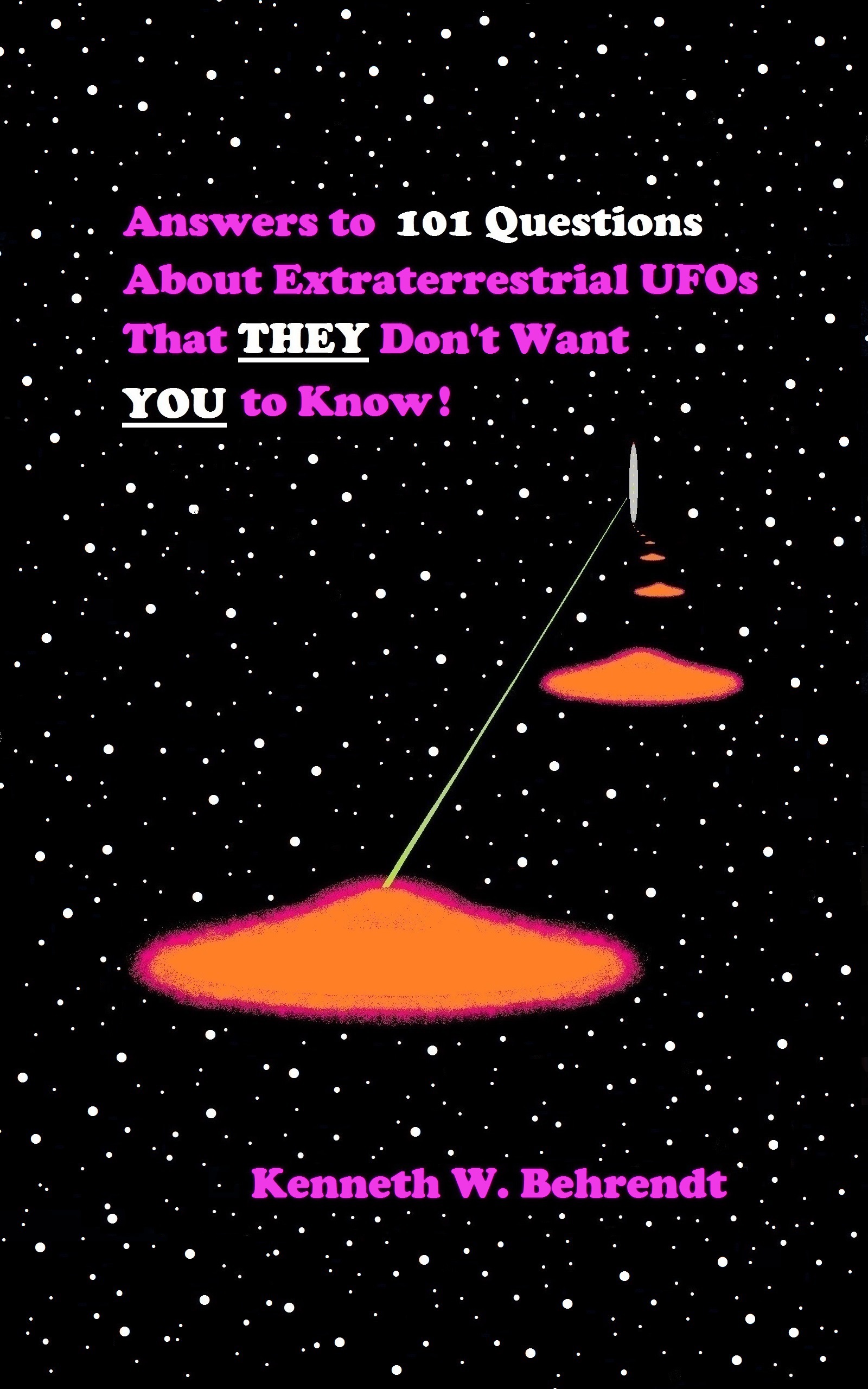
|
|
Conquest of Lotto by Kenneth W. Behrendt |

|
|
Here in my state of New Jersey we have a popular state lottery game called "Pick 6 Lotto" which is held twice weekly on Monday and Thursday nights. The basic idea of the game is that 49 numbered balls are placed in a plexiglass machine that mixes them thoroughly after which 6 of the numbered balls are allowed to escape and collect in a transparent chute attached to the front of the machine. The entire process takes place without the numbered balls ever being touched by human hands.
Players over the age of 18 can place a one dollar wager on a particular six number combination that they feel may be extracted from the machine or they can have the combination automatically selected for them via a "Quick Pick" option when they place the wager. Wagers are placed with various vendors around the state who have a computer terminal called a "Green Machine" located on their business premises. One can place as many wagers as one likes with this game. They can all be placed on a single combination or they can each be placed on a different combination.
Most people, the author included, realize that state lotto games like this are constructed so that the probability of any particular player winning the top prize or "jackpot" by correctly guessing all six numbered balls that will be selected at a particular drawing is virtually zero. However, it is not quite zero and, eventually, after several drawings wherein none of the MILLIONS of people placing wagers is successful, one or more EXTREMELY lucky individuals do eventually manage to "hit" the jackpot. Millions or even tens of millions of dollars may be won and the news soon spreads across the state. The millions of losers have each contributed money which has been carefully divided into halves. Half of the money collected for a particular drawing goes to the winners and the other half goes to help the state fund various educational and institutional projects. The games top winners then busy themselves figuring out what they will do with the huge financial winfall they are about to collect. The losers have only their dreams of what it will be like for them IF they manage to win the next drawing. Of course, one can still win some money if one manages to "catch" only five or four or even three of the numbers drawn from the machine, but these "lower tier" wins are not "life changing" wins. Yes, they will get some of a person's weekly lottery "investment" back, but, without the much coveted jackpot win, one will, even with the lower tier prizes, ALWAYS be losing money if playing this game regularly.
The average player of any state lottery is, I believe, only dimly aware of what is his actual probability of winning that state lottery's jackpot. Perhaps he is aware that his chances are somewhere between zero and slim, but is still really not sure exactly how slim it is.
For example, is seems that more and more states are adopting the "Pick 6" format with a set of 49 numbered balls. From a set of 49 numbered balls is is possible to select a total of 13,983,816 different subsets of 6 numbered balls. Since the ORDER in which the balls escape the lotto machine is unimportant, each subset of 6 balls can be referred to as a "combination". If the order in which the 6 balls was drawn was important, then each subset of 6 balls would be called a "permutation" and it would be possible to make over ten BILLION of them from the set of 49 balls. If a player had to correctly guess which of the ten plus billion permutations would be drawn from the machine, then it might take years before someone "hit" the jackpot! While the computations necessary to determine the total number of combinations or permutations that can be derived from a set of numbered lotto balls is not overly complex, I will not burden the reader with them here.
To put the actual probability of any lotto player hitting the jackpot in a 6 out of 49 or 6/49 state lotto game into perspective, let us assume that a person starts playing a semi-weekly state lotto game on his 18th birthday and places wagers on different combinations of numbered balls in EVERY drawing until he reaches the age of 100 years. Let us further assume that for each drawing he wagers one hundred dollars and, thus, purchases tickets containing 100 different ball number combinations.
One might assume that with such steadfast playing, our hypothetical player would surely win the jackpot sometime during the 82 years that he plays. Unfortunately, even with such devotion, our player still has little hope of being a jackpot winner. During his 82 years of play, he would have wagered on a total of 8,528 drawings and played a total of 852,000 combinations. Although this is certainly a huge number of combinations, it is still small compared to the total number of possible numbered ball combinations that can be extracted from the lotto machine.
If, however, our hypothetical player did manage to wager one hundred dollars in every drawing, he could "expect" to hit the jackpot, on average, once every 1344 years. This, however, would not be guaranteed. If, by some miracle, our player had immortality and his state could continue having semi-weekly drawings infinitely, he would find that there would be some periods of 1344 years during which he won no jackpot and other periods in which he won two or more jackpots! He would find that, as the tens of millenia slowly passed, he would, eventually, average out to one jackpot in any 1344 year period.
Of course, in spite of the above rather grim probability analysis, there is still the POSSIBILITY that the very next wager a lotto player makes could hit the jackpot because it is not possible to predict exactly which drawing in a 1344 year period will be the one that produces one of the combinations that the player has a wager on. It is this extremely faint ray of hope that keeps most "regular" players in the game. That plus the heavily advertised "rollovers" which, occasionally produced jackpots in excess of a hundred million dollars. Such rollovers occur when no one wins the jackpot for a particular drawing. That money is then added to the next scheduled jackpot.
If one merely plays randomly selected combinations of numbered balls, then the only way of very slightly increasing one's chance of hitting the jackpot is to play more different combinations in more drawings. When playing random number combinations (whether produced by the NJ Green Machine, one's dreams, numerology, or family birthdays), there is simply no way to "force" a jackpot win. The very few winners that are produced are created by sheer luck and nothing else.
A few years ago, a group of friends of mine decided to start a lottery "pool" and wanted me to join in. They hoped that by buying many tickets in every drawing that they could, in fact, force a jackpot win. Of course, that jackpot would have to be split among all the members of the pool each of which had to make a weekly financial contribution to remain a member in good standing. I performed some computations similar to the above and decided not to join. They proceeded without me and over the course of two years invested close to one hundred dollars every week. During the two year period that their pool existed, they did manage to win a few lower tier prizes, but it was only a small fraction of what they "invested". Eventually, like most such pools, their members began to move or change jobs and the group fell apart.
One of the members of the disbanded lotto pool approached me one day to tell me that he wanted to continue to play the Pick 6 lotto game twice per week and wanted to know if I could figure out some system that would give him a significant chance of hitting the jackpot in his lifetime. I tried to explain that lotto combinations are RANDOM numbers and that one of the mathematical definitions of a random number is that it is a number that is NOT capable of being mathematically or scientifically PREDICTED. Therefore, IN THEORY, it should be impossible to develop any kind of system for any state lottery. My friend, however, did not want to hear this type of argument. He was convinced that such a system had to exist and, because he knew of my interest in mathematics and science, believed that I could help him find such a system.
Ordinarily, if it was not a friend making such a request, I would have forgotten completely about the matter and gotten on with my own affairs. But, in order to appease this person, I decided to see if there were any available "systems" that could actually dramatically increase one's chances of hitting a Pick 6 jackpot. I obtained several dozen such systems and decided to put them to a quick test. No, I did not actually put any money on any of them. Rather, I had a friend who was an expert in the Qbasic programming language write a general purpose lotto "test" program for me.
This complex computer program allowed me to input the criteria of a lotto system and then run thousands of simulated lotto drawings to see how many prizes (jackpot and low tier) the system was catching. The program then analyzed the frequency of each prize catagory to see if was higher than would be expected to occur if no system was used but just randomly selected combinations had been played. In other words, this computer program could tell me if the combinations selected by the jackpot system I was testing was, in fact, actually winning more prizes than would have been won by playing an equal number of combinations picked by a random number combination generator like the Green Machine's "Quick Pick" feature.
As the reader can imagine, I was not surprised to discover that not one of the lotto systems I tested did any better or worse than random chance in terms of winning lotto prizes. My computer program could be set up to place wagers of the same amount on each drawing in a predetermined quantity of drawings and, when this was done, EVERY system I tested lost money continuously over time. Alternatively, if one started an open ended run of drawings using an initial fixed amount of money to wager with on all of the drawings, it was only a matter of time before ALL of the money was lost. Even more discouraging was the fact that, although I personally ran tens of thousands of simulated drawings with the program, at no time did any of the lotto systems tested produce a single jackpot!
After a month or so of this analysis, I reported the results to my friend whose inquiry had started my investigation. He, however, was unimpressed by the negative results and continued to suggest that I could somehow come up with a magic system for him. He wanted something that was easy to use, inexpensive, and which would be producing lower tier prizes frequently enough to convince him that he was playing as "close" to the jackpot as possible. I decided to humor him and said I would take one more look at the problem, but if I could not develop something in a few days, then he would have to bother someone else for help because I had already spent way more of my time and effort on this matter than I had anticipated would be necessary.
Incredible as it may sound, I did manage to come up with a system for playing any Pick 6 lotto game which I found met all of my friend's requirements and it is a system which he has now used for almost a year and which he is VERY happy with. I have decided at this time to reveal this system so that others who are looking for something unusual will be able to use it. However, let me state immediately that it carries no "win guarantees" of any kind and that anyone who choses to try it will be doing so at their own financial risk. For these reasons, any reader choosing to try my system should first do it strictly on paper for a few weeks to see if he is sufficiently impressed enough with its performance to actually to want to wager any of his money on it.
To begin with, let me say that this system consists of two components. The first is a simple way of performing "field reduction" so that you can reduce the total quantity of numbered lotto balls from 49 down to only 36 from which you will have a good chance of having ALL of the next drawing's 6 numbered balls selected. You will, therefore, always be using only 36 of the 49 numbers to make up the combinations that you will wager on.
The second component of this system consists of a VERY unusual set of combinations of the numbers derived by the first component. These special combinations utilize certain principles of advanced symmetry and probability theory to greatly increase the probability that all of the 6 actual numbers drawn in your state's next lotto drawing will appear TOGETHER in ONE of the special combinations. So, once you have selected the 36 numbers to use, you will then arrange them into only 12 six number combinations that you will play. Thus, this system will, IF you decide to wager money on it, require you to spent exactly $12 per drawing. If your state has two lotto drawings per week, then your cost will be $24 per week or $1248 per year.
In order to decide which 36 of your state's 49 numbered lotto balls to use, it is very important that you know what the last two combinations drawn were. If you are serious about using this or any system to place wagers, it is a good idea to maintain a running list of past drawn lotto combinations with the day and date of the drawing written in a column next to the actual combination drawn. It is important to know the last two lotto combinations drawn because it turns out that, most of the time, NONE of the numbers drawn in the NEXT drawing will have been selected in the prior two drawings! Therefore, you can fairly safely eliminate the numbers drawn from the last two drawings from the field of 49 numbers to perform your field reduction. If all of the numbers that make up the last two combinations are different, then that means you can eliminate those 12 numbers from the field of 49 and, thereby, reduce it to only 37 numbers. You must still find one more number to eliminate to get the total you will use down to only 36 numbers. At this point, the list of combinations you have been keeping will come in very handy. Simply look back another 5 drawings past the last two drawn and find which one number appeared the most. Eliminate this number along with the last 12 selected in the prior two drawings so that you have eliminated 13 numbers from the total of 49 and reduced the number field to only 36.
In the event that one number REPEATED itself in the last two drawings, then you will only have 11 DIFFERENT numbers from them to eliminate from the total of 49. Once again, you will need to look back an additional 5 drawings past the last two to now find the TWO numbers which appeared the most. Eliminate these numbers along with the last 11 selected in the prior two drawings so that you have eliminated 13 numbers from the 49 and gotten the total numbers you will play down to only 36. In the unlikely event that more that two numbers repeated themselves in the last two drawings, then you will have to continue this process so that you always wind up with only 36 numbers to play for the next drawing. (Note: in the event that your state uses less that 49 numbered balls in its state lottery, then you might only have to eliminate the six numbers drawn in the prior drawing plus a few more that appeared frequently in the 5 drawings prior to the last one.)
Okay, you've tried the above method for your state's 6/49 lotto game...now what?
Begin by writing the numbers 1 through 49 in two vertical columns on a sheet of ruled notebook paper. You can put 1 through 25 in the left side column and 26 through 49 in the right side column. Now go through these two columns of numbers and cross out the 13 numbers which you will be eliminating from the number field of 49. When this is done, perform a quick check by counting the numbers that still remain in the two columns and make sure that there are exactly 36 of them. Once this is done, start at the lowest remaining number (which could be number 1 IF you did not eliminate it) and place a CAPITAL letter "A" next to it. Move on to the next highest remaining number and place a capital letter "B" next to it. Place a capital letter "C" next to the next highest remaining number after this and so on down your column of remaining numbers.
At some point, you will have reached the 26th remaining number and placed a capital "Z" next to it. For the next highest remaining number, place a LOWER CASE letter "a" next to it, then a lower case "b" next to the next highest remaining number after that and so on. If you have done everything correctly, then you should be placing a lower case letter "j" next to the last and highest one of your 36 remaining numbers. The reason you have just assigned letters to the 36 numbers that you will be using is because I will now give you the 12 special combinations that you will play as combinations of LETTERS. You will then substitute the numbers you paired with each of your letters into these 12 combinations to form the 12 combinations of NUMBERS which you will then play in your state's next lotto drawing.
Here are the 12 special combinations into which you must substitute the NUMBERS to which you previously assigned capital and lower case letters of the alphabet:
From 36 numbers, mathematical calculations show that it is possible to form 1,947,792 different 6 number combinations. Thus, IF all 6 of the lotto numbers on the balls selected in a particular drawing happen to be among the 36 that one has selected to use in the Snowflake Wheel, then, with 12 combinations wagered on, one should have a 12 in 1,947,792 or 1 in 162,316 chance of having the jackpot combination among the 12 combinations. Obviously, this is not too impressive a chance of hitting the jackpot.
However, because of the unusually high symmetry of the Snowflake Wheel's special combinations and the truly random nature of the number combinations that are produced by the state lottery machines, something very unusual and unexpected occurs. The lotto number combinations that are drawn seem to have an unusual tendency to form so as to highly correspond best to just those 12 special combinations found in the Snowflake Wheel. This correlation tendency is such that it produces very dramatic results at the lower tier level of prizes. For example, when I tested this system for my friend, I discovered that IF I caught ALL 6 of the lotto numbers drawn in the 36 I had selected based on the prior drawings, then I would win a 4th prize (which happens when one has 3 of the 6 numbers in one combination) close to 100% of the time. In considering a series of 10 such drawings wherein all 6 numbers were caught in the 36, the Snowflake Wheel managed to win 4 third prizes (4 of the 6 numbers in one combination)!
Since this wheel costs $12 to play per drawing, winning a 4th prize is not too impressive. In NJ this prize is only about $3 to $5 which only recovers a small part of one's wager. However, a third prize in this state pays about $50 so if one paid $120 to play ten times and won 4 third prizes of $50 each, then they would win a total of $200 and realize a PROFIT of $80!
Of course, all of these win projections ASSUME that one has caught ALL 6 of the numbers drawn in one's selected group of 36. If this does not happen, then the situation changes for the worse. In testing the system, I found that if I only caught 5 of the numbers drawn in my group of 36, then I would only win a 4th prize about 25% of the time or about once in every 4 drawings. In considering a series of 10 drawings wherein only 5 numbers were caught in the 36 selected, the Snowflake Wheel only yielded a single 3rd prize. And, sadly, if 4 or less numbers were caught in the 36 selected, even a 4th prize became a rarity which occurred maybe once in 10 such drawings.
So, with this analysis, the reader can see that to get the best performance from the Snowflake Wheel, he must be VERY careful in his selection of the 36 numbers which he will put into the 12 combinations. It is for this reason that I STRONGLY suggest that anyone trying this system practice with it for several drawings without placing wagers to make sure that they are proficient at selecting the 36 numbers among which the 6 next drawn ones will appear. This is a CRITICAL part of the system. If the reader attempts to utilize the Snowflake Wheel by merely inserting randomly selected numbers into it, then he might as well save his time and effort and let the state's lottery machine pick the numbers for him.
In my short testing of this system, it did produce a few second prizes (5 of the 6 drawn numbers in one combination), but I did not see a jackpot with it. However, I am confident that with further testing it would, indeed, produce that much sought after jackpot combination. My lotto addict friend was very happy with the Snowflake Wheel and, although he does not play the game as ardently today as he did years ago, he claims that he still uses only the Snowflake Wheel when he does play. He believes that it has him playing as "close" to the jackpot as is humanly possible and he also likes the idea that it only uses 12 combinations which forces him to limit the amount he spends on a drawing. He claims that he was using some wheeling systems that cost almost $100 to play per drawing and that he was amazed that the Snowflake Wheel was actually outperforming them at a fraction of the cost!
Finally, let me remind the reader that when one is trying to win a 6/49 jackpot, one is really not gambling in the same sense as when one places wagers in a typical casino. The odds in casino games are carefully formulated so that the gambler plays with only a slight disadvantage with respect to the house. This means that as one gambles in a casino, they will lose a dollar slightly more frequently than they will win one and the excitement of gambling will be prolonged as long as possible. In the short term, a gambler in a casino may win a lot of money and then, even more quickly, lose it all back to the house so that, if he continues to gamble nonstop, the gambler will, eventually, lose ALL of his starting supply of money. This process is based on the IMMUTABLE laws of probability theory and GUARANTEES the house a continuous and reliable source of income. This reliable revenue stream has helped build the casino "gaming" industry across the United States and the world which, so far, shows no signs of slowing. People like the excitement of the casino environment with its bright lights and sound effects. If one is not prone to compulsive and financially ruinous gambling behavior, then such activity can probably be considered a unique form of expensive adult entertainment.
In the case of a state lotto game, however, the odds are formulated in such a way as to put the player at a GREAT disadvantage with respect to the state. If one were to start with, say, $1000 and wager it on lotto tickets using randomly selected number combinations and then use one's winnings to buy additional tickets, one would find out that he would lose ALL of his starting money in a matter of a few drawings! Even should one manage to win a second prize in the first 1000 combinations wagered on, this would only extend one's gambling for a few more drawings after the inital win and, eventually, all of the second prize money would be gone. One can only hope to overcome all of this with a jackpot win, the odds of which place it FAR beyond those of ordinary casino gambling games. In fact, one who seeks the lotto jackpot is really in search of a statistical miracle.
Lotto jackpots, in the final analysis, will, for most of those who win, be produced solely by blind chance. However, if one wants to believe that they truly are playing as close as possible to a jackpot win, then it is absolutely essential that one finds a very unusual system to use and then sticks with it. It is my hope that the reader may have found such a system in this article.
(Note: this article completed November 6th, 2003)
|
|
|
|
|
|
|
HOME
|
|
COSMIC VAULT GIFT SHOP
|
|